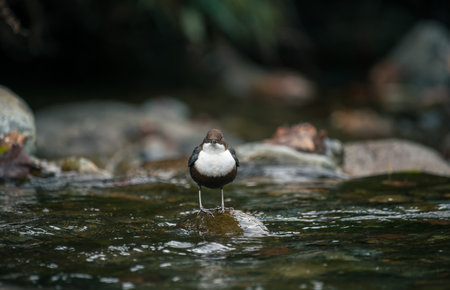Introduction: The Art of Reading the Water
For any angler seeking to elevate their bass fishing, mastering the subtle language of the water’s surface and observing avian behaviour is a skill set that transcends mere luck. In the UK, where varied weather and diverse habitats shape our waterways, developing an eye for these natural cues can mean the difference between a blank day and a memorable catch. Unlike the stillness often associated with coarse fishing, bass demand a dynamic approach—one that hinges on interpreting ripples, eddies, and the telltale movements of birds overhead. By learning to read these signs, we not only tune in to the rhythms of local ecosystems but also place ourselves at the heart of authentic British angling tradition. This article explores how harnessing surface indicators and bird activity can transform your approach to locating bass, making every outing a refined exercise in both observation and anticipation.
2. Surface Signatures: Ripples, Swirls, and Subtle Movements
If you want to fish for bass with the poise of an old hand on a British river or lake, developing a watchful eye for surface signatures is essential. The waters skin often whispers secrets about what lies beneath—if only you know how to interpret its language. Let’s delve into the classic varieties of surface activity and what each suggests about bass presence and the movements of their prey.
Ripples and Dimples: The First Hints
On a calm morning along a Cotswold reservoir or the shaded bends of the Thames, faint ripples or dimples can be your first clue. These subtle disruptions usually mark small baitfish as they feed near the surface or scatter in panic when a predator approaches. In particular, a series of tiny, consistent dimples may suggest that a shoal of fry is nervously patrolling just under the meniscus—a magnet for opportunistic bass lurking below.
Table: Common Surface Signatures and Their Meanings
| Surface Signature | What It Indicates | Likely Bass Behaviour |
|---|---|---|
| Boils | Larger fish disturbing the water from below | Bass actively chasing prey upwards |
| Dimples | Small baitfish or insects at surface | Bass nearby, waiting to strike |
| Parade Lines (V-wakes) | Baitfish schools moving together | Bass following or herding prey |
| Sudden Swirls | Predator attacking from underneath | Bass in feeding mode, likely hunting now |
| Popping/Plopping Sounds | Fish breaking surface for insects/food | Bass occasionally feeding on topwater prey |
The Parade Line Phenomenon
A distinctive feature on British stillwaters is the “parade line”—a gentle V-shaped wake tracing across glassy water. This often betrays a shoal of silverfish or young perch moving as one. If you spot this sign, it’s wise to cast slightly ahead or alongside, as bass frequently shadow these lines waiting to ambush stragglers.
Reading Swirls and Boils: Prime Bass Activity Indicators
Larger swirls and boils—those sudden eruptions that seem almost theatrical—signal serious predatory action. When bass strike from below, they push water upward, creating visible boils that linger briefly before fading. Such displays are most common during low-light periods at dawn or dusk. A swirl without a clear follow-up could mean a missed strike or a bass testing its luck; either way, it’s time to be alert and ready your lure.

3. Birdlife as Bass Spotters: Recognising Useful Behaviour
If you’re keen to sharpen your bass-finding instincts along the British coastline, few allies are as reliable as the local birdlife. Paying attention to the activity of certain avian species can offer a sophisticated, natural shortcut to reading the water and pinpointing bass shoals, often before a single fin breaks the surface. Here’s how interpreting the movements and feeding patterns of key British birds—such as terns, gulls, and cormorants—can lift your game from mere guesswork to informed decision-making.
Terns: The Precision Divers
Terns are a delight for any angler with an eye on the tide. Their distinctive, darting flight and sudden, arrow-like dives are not random; these elegant birds specialise in targeting small baitfish driven to the surface by predatory action beneath—often by bass. When you spot terns working an area repeatedly, especially over shallow estuaries or tidal rips, it’s a prime signal that bass are actively herding prey below. Observing whether they’re plucking fish or simply investigating can tell you if the hunt is on or merely exploratory.
Gulls: The Opportunistic Gatherers
While gulls may seem less refined than terns, their behaviour is equally insightful. Watch for frenzied gatherings—large numbers converging with excited calls often indicates a feeding event. Gulls will shadow both terns and cormorants, scavenging leftovers or snatching disoriented baitfish flushed by bass attacks. A sudden congregation of gulls dipping and bickering over a patch of water is rarely coincidental; it’s worth investigating with your lure or fly.
Cormorants: Underwater Reconnaissance
Cormorants are accomplished divers, spending prolonged periods underwater in search of fish. If you observe a cormorant surfacing repeatedly in one particular area, drying its wings between bouts of fishing, it’s likely found a dense concentration of prey. Since these birds favour similar conditions to bass—clear water with plenty of cover—their presence hints at productive ground. Take note if multiple cormorants begin working a stretch simultaneously; this often marks a temporary hotspot where baitfish (and thus bass) are holding.
Reading Between the Wings
It’s not just about seeing birds—it’s about noticing how they behave: Are they hovering, diving, resting or squabbling? Patterns emerge with time and observation. Combining this bird-watching wisdom with knowledge of tides and structure gives you an edge that feels almost intuitive—a natural rhythm between angler, water, and wild Britain.
4. Seasonal Influences on Surface and Bird Indicators
Understanding how the shifting British seasons shape both water conditions and bird activity is pivotal to successful bass location. Throughout the year, subtle changes in temperature, light, and wind patterns affect both the behaviour of baitfish and their avian pursuers. By tuning into these seasonal cues, you can refine your reading of the water and adapt your approach for greater success.
Spring: Awakening Life and Early Activity
As spring breathes new life into coastal waters, rising temperatures encourage the movement of sandeels, sprats, and other baitfish towards the shallows. Look for increased surface dimpling as these shoals become active, often pursued by terns and gulls newly arrived from wintering grounds. On calm mornings or evenings, subtle swirls or gentle boils may signal early season bass hunting close to shore.
Summer: Heightened Activity and Finer Clues
Long daylight hours and warmer seas bring a surge in surface action. Large baitfish shoals attract frenzied feeding birds—terns plunge-diving with precision and gulls circling persistently. Bass are more likely to herd prey against sandbanks or rocky points, producing visible bow-waves or dramatic splashes. However, summer’s clarity can make fish wary; careful observation of birds’ sudden changes in direction or frantic hovering often betrays a hidden predator below.
Autumn: Abundance and Aggression
This is perhaps the most dynamic period for surface and bird indicators. Baitfish numbers peak as they prepare to migrate, drawing bass into aggressive pre-winter feeding sprees. Expect explosive surface commotion—sprays of silver as prey leap clear—and flocks of gulls wheeling noisily overhead. Cormorants diving repeatedly in one area can also hint at concentrated baitfish schools being harried from below.
Winter: Subtlety and Change
With dropping temperatures, much of the obvious surface activity diminishes along the British coast. Many bird species disperse or move offshore, leaving fewer visual cues. Yet hardy overwintering species like mergansers or grebes still betray bait concentrations in estuaries or sheltered bays. Watch for isolated ripples on glassy water or small flocks working quietly—these understated signals can reveal winter bass still willing to hunt when conditions align.
Seasonal Bird and Water Indicator Table
| Season | Key Bird Species | Water Conditions | Main Indicators |
|---|---|---|---|
| Spring | Terns, returning gulls | Mild, increasing daylight | Dimpling baitfish, bird dives near shore |
| Summer | Terns, black-headed & herring gulls | Warm, clear water | Bow-waves, tight bird flocks, splashy attacks |
| Autumn | Cormorants, large gull flocks | Cooling, choppy at times | Splash-outs, massed birds over boils |
| Winter | Mergansers, grebes (inshore) | Cold, calm or stormy spells | Sparse ripples, discrete diving birds |
Naturally Adapting Your Approach Year-Round
The art lies in remaining alert to these evolving patterns—knowing when noisy summer commotion gives way to autumn’s abundance or winter’s whisper-quiet clues. With each change in season along the British coastline comes a new chapter in reading the water for bass; those who tune their senses accordingly are rewarded with unforgettable encounters and a deeper appreciation of nature’s rhythms.
5. Joining the Dots: Combining Signs for Successful Bass Location
The art of locating trophy bass along our British coastlines is never about spotting a single clue in isolation. Instead, it’s the subtle interplay between water conditions and wildlife behaviour that sets the seasoned angler apart. By weaving together these surface signs and avian activities, you form a holistic understanding of the environment—a skillset as much about intuition as it is about observation.
First, consider the water itself. Ripples, boils, and slicks tell stories of hidden currents or baitfish shoals disturbed by predators. Yet, these surface cues only become truly meaningful when you notice them synchronising with the theatre above—namely, the flurry of gulls or the purposeful dives of terns. If birds are actively feeding or tracking schools just beyond a patch of nervous water, you’ve likely found a hotspot where bass push prey to the surface.
But joining the dots goes further than simply matching birds to boils. Each species has its own preferred prey and hunting style. For example, when you see a group of sandwich terns repeatedly plunging into a narrow estuary mouth as the tide turns, you can infer that sand eels are being funnelled through—a prime opportunity for lurking bass. Similarly, watching cormorants surfacing with silver flashes in their beaks can reveal deeper channels worth probing with lures or live baits.
The more time you spend observing, the more attuned you become to patterns that others overlook: how wind direction concentrates floating debris (and thus bait), how overcast skies might embolden both fish and birds to hunt shallower waters during daylight hours, or even how a sudden silence among previously active gulls may signal a predatory sweep beneath.
In essence, successful bass fishing in local UK waters demands more than rote technique—it rewards those who treat each outing as an unfolding narrative. By combining interpretive skills across both water and wildlife, you gain a dynamic edge; every cast becomes informed by real-time knowledge rather than mere chance. This approach not only increases your odds of connecting with specimen bass but also deepens your appreciation for our coastal ecosystems in all their complexity.
6. Practical Tips: Putting Observation into Practice
Transforming your time on the water from mere fishing to refined nature watching is the hallmark of a seasoned bass angler in the UK. To make the most of surface signs and bird activity, it pays to be methodical and deliberate with your approach. Here are some practical suggestions for both shore and boat anglers to enhance your observational skills and bring more bass to hand.
Tools for the Job
Always carry a good pair of polarised sunglasses—these are indispensable for reducing glare and helping you pick out subtle changes in water colour, slicks, or fish movement below the surface. A lightweight pair of binoculars can be invaluable for scanning distant gulls or terns without disturbing their natural behaviour. Keep a small waterproof notebook handy; jotting down observations builds up your personal log of what works where and when, turning fleeting patterns into reliable knowledge over time.
Techniques for Sharpening Your Eye
Start each session with a quiet period—take ten minutes simply to observe before casting a line. Watch how birds behave: are they actively diving, hovering, or just resting? Note any abrupt changes in their patterns, as these can signal shifting baitfish schools—and by extension, feeding bass. Pay attention to how surface conditions change with tide, wind, and light. For example, a sudden ripple pattern or oily patch might indicate predatory activity below.
Habits That Make a Difference
Develop the discipline to fish with your eyes first and your lure second. Move slowly along the shoreline or drift quietly by boat, minimising disturbance so as not to spook either birds or bass. Share insights with fellow anglers—there’s a strong tradition among British sea anglers of swapping notes over tea or at the slipway, which can help fill gaps in your own understanding.
Refining Your Naturalist’s Instincts
The best bass anglers become students of their local coastline, returning at different tides and seasons to watch how wildlife and water interact. Over time, you’ll build an intuitive sense for where bass might lurk based on little more than a flicker of wings or a shimmer on the surface. Embrace patience and curiosity—nature rewards those who look closer and ask why.
By combining careful observation with these practical habits, you’ll soon find yourself reading the water like an old hand—turning every outing into an opportunity not only for sport but also for deepening your connection with Britain’s wild coastal places.


